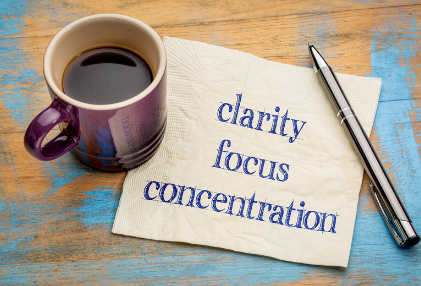blog 1
9 brilliant benefits of yoga nidra and why you should try it
Yoga Nidra, also known as 'yogic sleep', is a deeply nourishing and restorative form of guided meditation.
Achieving a state of inner calm whilst practicing this magical and deeply powerful form of yoga can benefit you in a number of significant ways, which can help you to enhance your wellbeing and transform your life.
Here are 9 brilliant benefits of developing a regular yoga nidra practice and what it can do for you.
1. Regulates your nervous system
In the modern world we live in today, most of us are accustomed to rushing around, spinning too many plates and spending too much time in a state of stress. Living in this ‘fight or flight’ mode of our sympathetic nervous system isn’t good for us and can result in nervous system disregulation and illness.
The good news is yoga nidra enables you to regulate your sympathetic nervous system so the much-needed calmness of the parasympathetic nervous system can take over, to provide deep rest and a neutral state of calmness.
At Revival Nidra each of our sessions begins with some gentle breath work to help calm the nervous system and ground the body, directing the external senses inwards and pausing the thinking mind. From here, the journey to complete relaxation begins.
Using powerful visualisations, sound and poety, our deeply nourishing and restorative yoga nidra sessions facilitate the re-regulation of the nervous system to provide deep rest, enabling the restoration of the natural balance of your body to begin the process of healing.
2. Promotes healing and restoration
Yoga nidra can allow us to access our delta brainwaves where we enter a deep, dreamlike state whilst still awake. This is the state in which all our healing and restoration happens, which is essential for us now more than ever, as we are living at a pace that is totally out of kilter with the natural rhythms of our bodies.
By reconnecting to our natural cycles and intuition, we can start to reconnect with ourselves on a deeper level, promoting relaxation and physical healing at a cellular level which can help aid recovery from physical ailments, as well as allowing us to release emotional blockages to promote emotional healing.
3. Boosts creativity
The founder of the Himalayan School of Yoga Nidra, Swami Satyananda Saraswati, explained nidra as ‘a state of mind between wakefulness and dream, wherein deep constructs of the mind become opened’[1].
Several studies, including studies by Kamakhya Kumar and Sri Shirish Kumar Gupta found that spending regular time in that liminal space between being awake and being asleep has been proven to awaken the whole brain, which in turn boosts or ‘awakens creativity’[2].
The more we practice, the more the mind is awakened, released and integrated into our consciousness and the more access we have to our entire creative palette[3], which can help us in many different areas of our daily lives, as well as making us happier.
4. Enhances mental clarity
Accessing our subconscious mind on a regular basis also improves our cognitive functions, including enhancing concentration and improving focus and mental clarity - all things that help to improve our daily wellbeing as well as our long-term health.
Yoga nidra can also be said to facilitate a flossing of the neural pathways. Practices such as the use of opposites - a stage of nidra where the participant is guided to visualise two opposing concepts and then to combine them - require the brain to work harder by visualising opposing concepts and emotions at the same time, which it is not generally accustomed to doing.
Regular practice speeds up the brain’s ability to achieve such cognitive tasks and acts like a kind of mental agility test, helping to improve specific as well as overall cognitive function.
5. Reduces stress & anxiety
We’re all guilty of feeling stressed or anxious sometimes. Modern life means it can’t be avoided unfortunately. Many people practice meditation to help them manage their stress, but yoga nidra has been shown to be more effective.
A 2018 study published in the International Journal of Yoga found that yoga nidra was more effective then traditional meditation for managing stress and reducing anxiety.[4] by encouraging a sense of withdrawal[5] and enabling mindfulness.
Developing an ability to be able to focus inward during times of stress and anxiety is a great way to quiet the monkey mind and get closer to a calm, undistracted state of being.
Stress reduction happens almost immediately in our sessions at Revival, through the breath awareness work at the beginning of each practice. This can help to calm the nervous system and lead to a reduction of stress straight away.
Then as you get further into the practice, in that dreamlike state, where you are so deeply rested your mind and body have begun healing, this is where the stress just slips away and where the most profound benefits can be found.
6. Improves quality and amount of sleep
When in the yoga nidra state we are effectively mimicking sleep and therefore experience the benefits of sleep despite being physiologically awake. The more restorative our sleep or rest, the more our body and mind are able to heal and rejuvenate.
Studies have found sleep quality can be improved when yoga nidra is practiced in the morning.[6]
Studies have also found nidra to have a positive effect on people who suffer from chronic sleep disorders, such as insomnia[7]. When practiced at night the process allows the brain and body to relax into sleep naturally with the additional bonus that you can already be laid down in bed for the process ready to drift off.
(We’re currently writing a more detailed blog about the benefits of nidra on sleep, so look out for it soon).
7. Helps you heal from trauma
It is widely accepted in today's society that trauma is carried in the body as well as the mind[8]. For many trauma survivors the body can be disconnected from itself, and, in the worst cases, the body can be a very hostile and volatile place to be.
Used, with care, yoga nidra can help sufferers to process traumatic memories and emotions, which can help them to heal from their trauma.
Richard Miller’s ‘i-Rest Program’ was developed in the 1970s while Miller was working with PTSD sufferings military war veterans. It was so successful it is now widely used as a treatment for PTSD[9].
Pence 2014 also showed positive results when using yoga nidra with victims of sexual assault[10].
There is also some research to prove the efficacy of use of yoga nidra in helping with other mental health disorders, such as anxiety and depression. Although the study states ‘more research is needed’ it is clear that ‘there is ‘strong evidence’ that nidra helps to reduce stress, which in turn helps to ‘prepare a person suffering from severe trauma for trauma therapy’. [11]
8. Helps you manage pain
Helping manage the symptoms of chronic pain is another way yoga nidra can help people, by helping the to find a sense of spaciousness in their daily life, as well as managing their pain and building resiliency.
This type of healing focusses on helping people connect to their inner self, becoming aware of different sensations within their body and using breathwork and visualisations to create space and a sense of ease, as well as helping to work with the emotions that come with chronic pain suffering.[12]
Different kinds of pain can be reduced and managed too, as found by Li L in 2018, during a study looking at the reduction of pain when undergoing a colonoscopy. The patients’ perception of and ability to detract from the pain being experienced were both greatly increased when the procedure was accompanied by a yoga nidra practice.[13]
9. Lowers blood pressure
The complete relaxation state achieved during a yoga nidra practice has been associated with lowering blood pressure levels, when practice regularly[14], which can be beneficial to both those with high blood pressure and those wishing to improve their athletic performance, contributing to ‘better athletic performance’[15] as well as the ‘long-term wellbeing of your cardiovascular system’.
How often is regular?
So, we’ve said ‘regular practice’ a lot in this blog, but what does that actually mean?
Some people swear by once a week and we agree you would certainly see the benefits of that.
However, to get the maximum benefit from nidra it is advised to practice once a day.
But don’t worry, you don’t need long to be able to access these amazing benefits – according to Moszeik et al you just need 11 minutes a day for 30 days to make a significant difference to a range of factors.[16]
So, what now?
If you’re reading this and thinking you need some yoga nidra in your life check out my upcoming events page and come along to one of the sessions.
Or if you’ve already attended some sessions or been practicing nidra at home and have experienced some of these benefits for yourself, please get in touch. I’d love to hear your experiences.
Further Reading
If you want to delve a bit deeper into the specific benefits here are all the references from the article. Dive in and enjoy.
[1] https://aurawellnesscenter.com/2023/08/10/origin-of-yoga-nidra
[2] Kumar, K., 2008. A study on the impact on stress and anxiety through yoga nidra
[3] https://www.sarahbrose.com/blog/yoganidra
[4] https://www.webmd.com/balance/what-to-know-yoga-nidra
[5] https://medium.com/@SandeepPrakash/yoga-nidra-and-healing-from-trauma-59b25d18c775
[6] Electophysiological Evidence of Local sleep During Yoga Nidra Practice, Datta, Mallick, Tripathi and Deepak
[7] Datta et al, 2017
[8] Van Der Kolk, B, 2003. The body keeps the score
[9] Miller, R.C., 2015. The iRest program for healing PTSD: A proven-effective approach to using yoga nidra meditation and deep relaxation techniques to overcome trauma. New Harbinger Publications
[10] Pence, P., Katz, L., Huffman, C. and Cojucar, G., 2014. Delivering integrative restoration-yoga nidra meditation (iRest®) to women with sexual trauma at a veteran's medical center: a pilot study. International journal of yoga therapy, 24(1), pp.53-62
[11] Nayak, K. and Verma, K., 2023. Yoga-Nidra as a mental health booster: A narrative review. Journal of Ayurveda and integrative medicine, 14(6), p.100842
[12] https://yogainternational.com/ecourse/irest-yoga-nidra-for-people-with-chronic-pain
[13] Xiang, L.I., Zhan, Q., Wang, X.F., Zhao, X.H., Zhou, Y.B., An, S.L., Han, Z.L., Wang, Y.D., Xu, Y.Z., Li, A.M. and Zhang, Y.L., 2018. Risk factors associated with the detection and missed diagnosis of colorectal flat adenoma: A Chinese multicenter observational study. Scandinavian Journal of Gastroenterology, 53(12), pp.1519-1525
[14] https://www.ayurveda-awareness.com.au/5-physical-benefits-of-yoga-nidra
[15] di Fronso, S. and Bertollo, M., 2021. The thin line between waking and sleeping in athletes: A call for yoga nidra in the sporting context. Frontiers in Psychology, 12, p.654222
[16] Moszeik, E.N., von Oertzen, T. and Renner, K.H., 2022. Effectiveness of a short Yoga Nidra meditation on stress, sleep, and well-being in a large and diverse sample. Current Psychology, 41(8), pp.5272-5286









